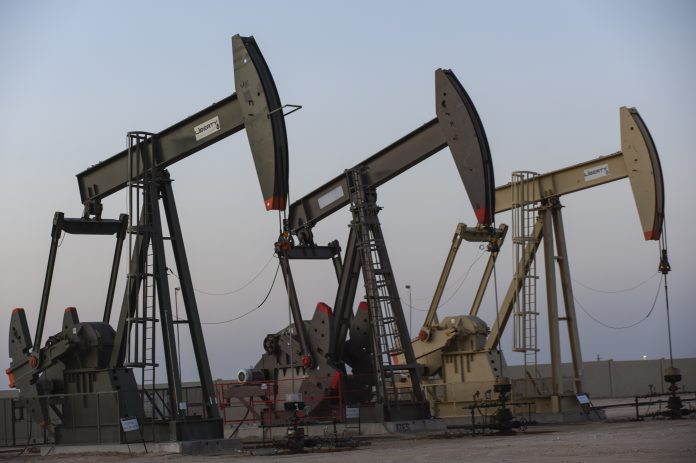The Permian Basin has been producing a record of around six million barrels of oil per day for the past year, but can it do more and if so what will it take?
State Rep. Brooks Landgraf and Waco economist Ray Perryman say it definitely can and it will if the necessary investments are made.
“Boosting state investment is the crucial catalyst to unlocking heightened production in the Permian Basin,” said Landgraf, an Odessa Republican who chairs the House Environmental Regulation Committee in Austin. “Despite the constraints imposed by Washington and the whims of Wall Street, a substantial financial commitment from Texas is absolutely pivotal in reinvigorating confidence in the industry and propelling production to unparalleled heights.
“That’s precisely why I’m leading the charge for the passage of Texas STRONG in 2025. It’s time to unleash the boundless potential of the Permian Basin for the prosperity of Texas and the nation as a whole.”
Passing the House but stalling in the Senate, Landgraf’s bill sought to amend the Texas Constitution and state law to create the Texas Severance Tax Revenue and Oil and Natural Gas (STRONG) Defense Fund.
The Texas STRONG Fund would get part of severance tax revenues to support transportation infrastructure, workforce and economic development, public education and healthcare and public safety needs in regions of the state with the highest oil and gas production.

“The Permian Basin, with its rich history dating back to the earliest days of the Texas oil boom, serves as an enduring testament to the limitless potential of our nation’s energy resources,” Landgraf said. “From the historic Santa Rita No. 1 to the cutting-edge advancements in hydraulic fracturing, our region has consistently surpassed expectations and set new standards in production.
“Its legacy is also one deeply entwined with pivotal moments in history from bolstering efforts in every American-fought conflict since World War II to providing affordable and reliable energy to millions worldwide and thereby lifting countless individuals out of poverty. Today, the Permian Basin continues to push boundaries and embody the enduring spirit of American ingenuity through innovation and resilience.
“I believe it is poised to remain a symbol of America’s energy independence and technological prowess for many more generations to come.”
Landgraf said the Basin’s record-breaking output “is a reflection of the men and women who call the oil patch their home. Unparalleled production levels truly are a testament to the indomitable spirit of the West Texas oil workers who labor day in and day out to extract the riches in our region,” he said. “Their unwavering work ethic, ingenuity, resourcefulness and resilience have been the driving force behind this remarkable achievement.”
He said eight of the state’s top 10 oil- and gas-producing counties are in the Basin.
“As it turns out, around 80 percent of the state’s oil and gas production taxes come from the Permian Basin as well,” Landgraf said. “That’s why it is crucial that lawmakers recognize the interconnectedness of investments in the Permian with the broader welfare of the state.
“Investments in the Permian are indeed investments in Texas as a whole.”
Perryman said the Basin’s production peaked in 1973 but had fallen by almost 70 percent by 2008 prior to the surge of the past 15 years, adding that Martin and Midland counties are producing the most oil while Reeves and Midland counties are pumping the largest quantities of gas.
“There was a consensus that the area was running out of oil,” Perryman said. “Then along came fracking and other advances in drilling methods and the entire picture shifted.
“We are now seeing record production levels of three times the prior 1973 peak in both oil and natural gas. Although ultimate levels will depend on many factors, these levels can certainly be exceeded.”
He said available data indicates that the Basin has reserves of more than 18.5 billion barrels of oil and about 88 trillion cubic feet of natural gas that are likely to be recovered given the current production methods and economic conditions.

“In addition the region has extensive reserves that are technically recoverable with current estimates of almost 100 billion barrels of oil and well over 200 trillion cubic feet of natural gas if the market makes them economically beneficial to produce,” Perryman said. “Given recent patterns and expected future trends it appears probable that these technically recoverable reserves will ultimately be developed and that the estimates of available resources will also continue to expand.”
Despite massive increases in production over the past 15 years, he said, reserves’ levels have continued to increase markedly with new discoveries.
“In fact reserves are more than five times higher than they were in 2009 with shale gas reserves more than 9,000 times higher,” Perryman said. “Moreover, current technology only recovers about 8 percent of the oil in shale formations with no secondary or tertiary recovery process.
“Even very modest improvements in technology, which will certainly happen, would work to dramatically escalate production capabilities and reserves. The unique geology of the region, with some areas having as many as 15 stacked formations that are potentially productive, also contributes to the likelihood of ongoing reserve increases.”
Perryman said the U.S. Geological Survey estimates that there are billions of barrels of oil and trillions of cubic feet of gas here that are not yet even identified.
“When these factors are combined with the growing global energy demand and the low-carbon properties of the resources in the region, the probability of strong production for decades to come is shown to be quite substantial and current production levels will almost certainly be exceeded,” he said.




